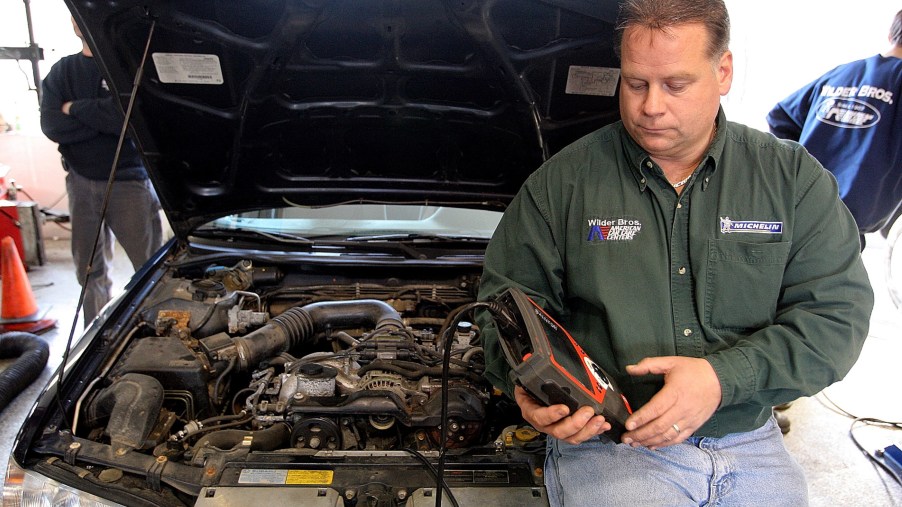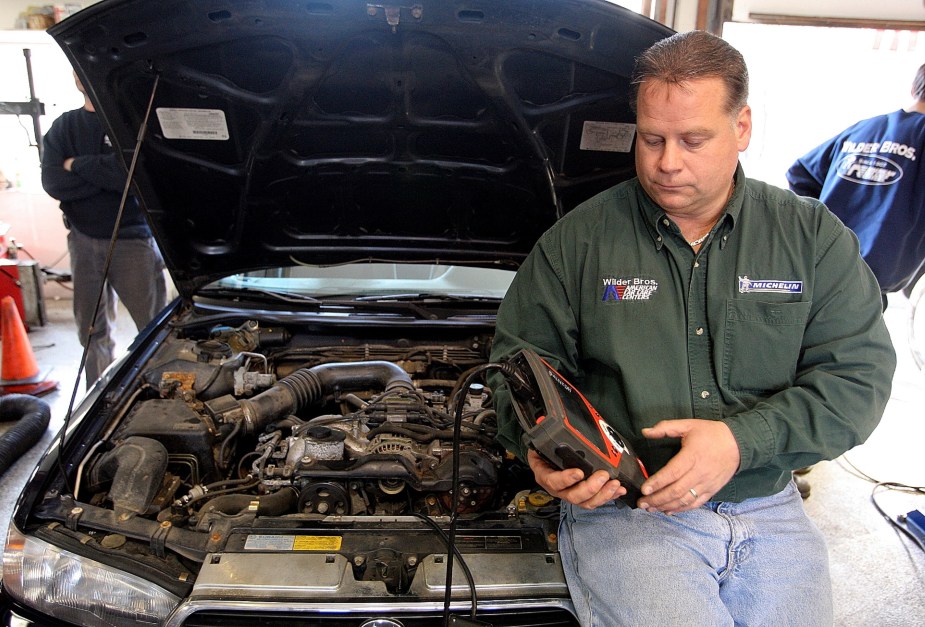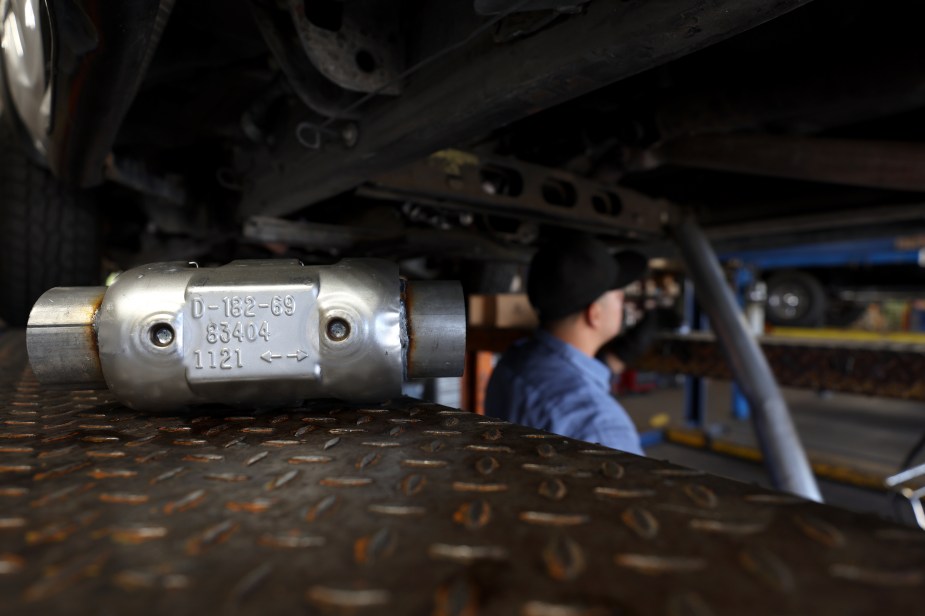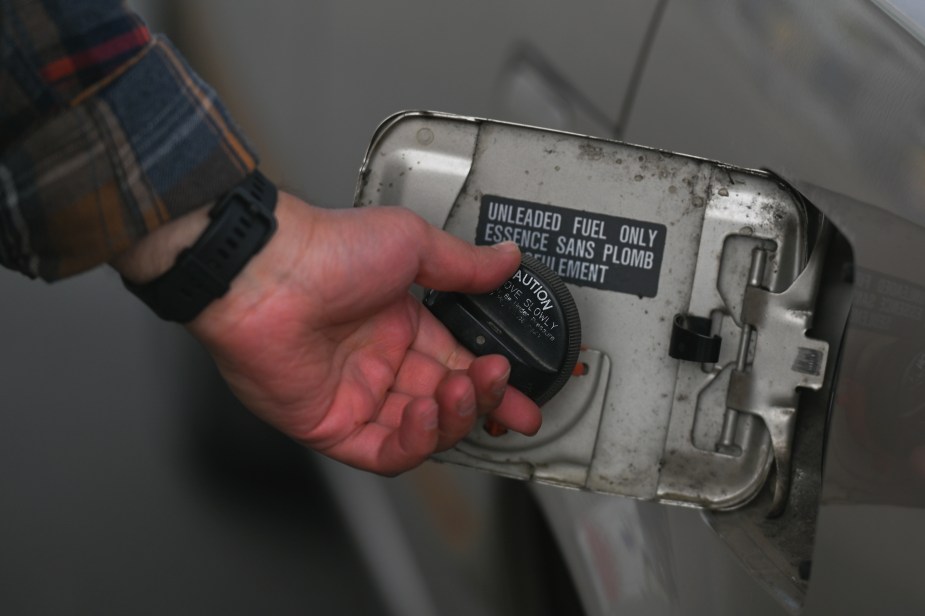
What the 4 Most Common Emissions Diagnostic Trouble Codes Mean
The most common emissions diagnostic trouble codes guide highlights:
- Decoding diagnostic trouble codes via an OBDII scanner tells you what’s behind your car’s Check Engine Light
- The most common emissions-related diagnostic trouble codes start with ‘P0’ followed by the alphanumeric characters specific to the problem
- P0130-P0167 point to the oxygen sensors, P0420-P0439 are for the catalytic converter, P0400-P0409 indicates EGR issues, and a P0440-P0459 might be resolved by tightening your gas cap
Ah, the ever-helpful Check Engine Light, truly a wonder of modern car repair. Jokes aside, though, the CEL is a simple way to let you know something’s wrong, even if it doesn’t tell you exactly what’s wrong. And ignoring it isn’t a good idea, not least because it prevents your car from passing emissions tests and can tank your gas mileage. Fortunately, identifying your emissions problem just requires reading the diagnostic trouble code.
What is an emissions diagnostic trouble code?

If you just look at the CEL, you won’t get any information about what’s wrong with your car. But that’s because you’re not looking with an OBDII aka OBD2 scanner. These devices plug into your car’s OBDII port and display precisely what’s going wrong. And they do that via diagnostic trouble codes (DTCs), aka trouble codes or check engine codes.
There are literally thousands of diagnostic trouble codes out there, including some manufacturer-specific ones. Fortunately, because the OBDII system is standardized, all DTCs follow a standard five-character layout: XYZxx. And decoding it is relatively straightforward:
- X: Malfunction type
- P: Powertrain (engine, transmission, fuel, ignition)
- B: Body (passenger compartment items, including the A/C and airbags)
- U: User network (wiring bus and OBDII-system-related)
- C: Chassis (mechanical systems, including the steering, suspension, brakes, and ABS)
- Y: Whether the code is manufacturer-specific
- 0, 2: Universal or government-mandated code
- 1: Manufacturer-specific code
- Z: Affected car system
- 1: Fuel or emission management
- 2: Fuel or air injector circuit
- 3: Ignition or misfire
- 4: Emission control
- 5: Vehicle speed and idle control
- 6: Computer and output circuit
- 7, 8, 9: Transmission
- A, B, C: Hybrid system
- D, E, F: Future allocation (MotorTrend)
- xx: Specific failure code
That’s understandably a lot to take in, but you don’t need all of it to understand emissions diagnostic trouble codes. Since this guide focuses on universal emissions-related DTCs, all the entries start with ‘P01’ or ‘P04.’ Admittedly, these entries aren’t the only emissions-specific fault codes out there, but they are the most common.
Multiple emissions diagnostic trouble codes correspond to a bad oxygen sensor
Oxygen (O2) sensors are critical to your engine’s performance. As the name implies, O2 sensors monitor the oxygen levels in the gas stream before (upstream) and after (downstream) your catalytic converter. The upstream one is especially important because it lets the ECU monitor and control your engine’s air-to-fuel ratio. But whether it or the downstream sensor fails, you’ll get a CEL and corresponding diagnostic trouble code.
As for which sensor is bad, that depends on which DTC your car spits out:
- P0130-P0135: Bank 1 sensor 1
- P0136-P0141: Bank 1 sensor 2
- P0142-P0147: Bank 1 sensor 3
- P0150-P0155: Bank 2 sensor 1
- P0156-P0161: Bank 2 sensor 2
- P0162-P0167: Bank 2 sensor 3
You might’ve noticed that there are three O2 sensors mentioned in that diagnostic trouble code list, and I only mentioned two earlier. That’s because some cars have two upstream O2 sensors rather than just one.
But figuring out which O2 sensor the DTC points to is fairly simple. Firstly, the sensors are numbered according to engine proximity. Thus, the closest to the engine is always sensor 1. Secondly, Bank 1 is the side with the odd-numbered cylinders, while Bank 2 corresponds to the even-numbered ones. And if you have an inline engine, you only have one bank.
As for what problems the diagnostic trouble codes indicate, they range from voltage issues to slow or no response to general malfunction. In addition, if you have heated O2 sensors, which have built-in heaters to get them up to temperature faster, they have heater-circuit-specific DTCs. But regardless of the error, the fix is the same: replace the sensor.
P0420 isn’t the only DTC that spells catalytic converter trouble

Fortunately, the next emissions problem has far fewer diagnostic trouble codes to keep track of. Besides letting your ECU adjust the engine’s air-to-fuel ratio, the O2 sensors also monitor the catalytic converter’s activity. And if they sense something’s off, they’ll trigger a CEL and one or more DTCs:
- P0420-P0429: Bank 1 catalyst problem
- P0430-P0439: Bank 2 catalyst problem
The most common catalytic converter diagnostic trouble codes are P0420 and P0430, which indicate ‘Catalyst system efficiency below threshold’ for their respective banks. Basically, for some reason, your catalytic converter isn’t working as efficiently as it should be. Often that’s because it’s clogged by oil or unburnt fuel, but it could be from an exhaust leak.
Regardless, if you get an emissions diagnostic trouble code in one of these ranges, you should get your catalytic converter inspected.
If you see one of these DTCs, especially a P0400 or a P0401, your EGR valve might need help
Besides the catalytic converter, your engine also relies on its exhaust gas recirculation (EGR) system to control emissions. A vital part of that system is the EGR valve, which regulates how much of those exhaust gases recirculate at a time. And when the valve fails or gets clogged up, your engine will throw up a CEL and one or more corresponding diagnostic trouble codes in the P040x family.
The most commonly-seen EGR DTCs are P0400 and P0401, which indicate ‘Exhaust gas recirculation flow malfunction.’ However, they technically don’t mean the same thing. A P0400 code means the EGR valve isn’t opening at all and/or the EGR temperature sensor isn’t registering any temperature change, YourMechanic explains. Meanwhile, a P0401 code means the EGR valve isn’t opening enough and/or the temperature isn’t changing enough.
As for the other P040x diagnostic trouble codes, they’re specifically related to the various EGR sensors. A clogged or broken EGR valve can trigger them, but so can broken sensors. So, if you clean or replace the valve and the code remains, you should check the sensors and their respective wiring harnesses.
Check your gas cap first if you get a P0440, P0446, P0455, P0457, or any of these diagnostic trouble codes

Although Check Engine Lights come on for numerous reasons, one is particularly common. And it’s something you can check without even breaking out the OBD2 scanner: a loose gas cap. No, seriously, you’d be surprised how often turning that CEL off just requires tightening your fuel cap.
But assuming you want to double-check the diagnostic trouble codes to be sure, you’ll likely see a P044x or P045x DTC. Both diagnostic trouble code families point to issues with your car’s evaporative emissions control system. Some indicate that a sensor has malfunctioned for some reason. Others, though, signal that there’s a leak somewhere in the emissions control system. And of those, these are the ones that loose gas caps typically trigger:
- P0440: Evaporative emission (EVAP) control system malfunction
- P0446: EVAP control system vent control circuit malfunction
- P0455: EVAP system gross leak
- P0457: EVAP control system leak detected
It’s worth noting that loose fuel caps aren’t the potential culprits for these DTCs. If your car’s charcoal canister is damaged, say, because you overfilled the gas tank, you might get one of these P044x/P045x codes. These DTCs can also pop up if the EVAP system’s lines, valves, and other sensors get damaged. But unless there’s an obvious fuel leak, if you see one of these diagnostic trouble codes, check your gas cap first.
Follow more updates from MotorBiscuit on our Facebook page.


